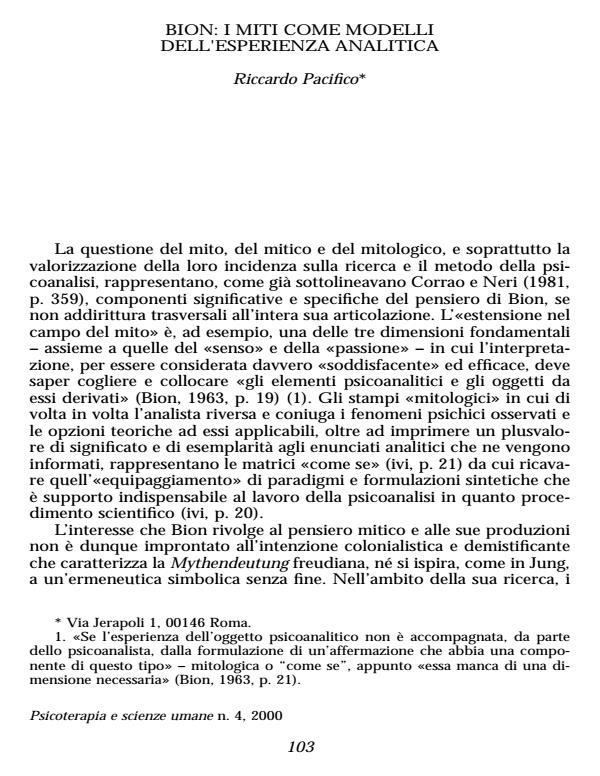Bion: i miti come modelli dell'esperienza analitica
Journal title PSICOTERAPIA E SCIENZE UMANE
Author/s Riccardo Pacifico
Publishing Year 1 Issue 2000/4
Language Italian Pages 17 P. File size 49 KB
DOI
DOI is like a bar code for intellectual property: to have more infomation
click here
Below, you can see the article first page
If you want to buy this article in PDF format, you can do it, following the instructions to buy download credits

FrancoAngeli is member of Publishers International Linking Association, Inc (PILA), a not-for-profit association which run the CrossRef service enabling links to and from online scholarly content.
Bion: i miti come modelli dell'esperienza analitica ABSTRACT: The categories of myth, mythical and mythologic cross repeatedly, and in a significant way, Bion’s theoretic and clinical thought. The article, besides displaying the elements of originality included in such relations (the distinction between private myth and general myth; the myth as narrative «costant conjunction», so as verbal algorithm; the factorization of the mythologic plots), tries to analyse the sense and the value which they assume within bionian psychoanalysis. So, on the one hand, along vertical, structural axis of the «grid», myths belong to a primitive stage or dimension of the psychic activity, to the work of alpha function: they are, as well as dreams, a kind of thought. On the other, along horizontal, functional axis of the diagram, the mythological materials canbe used, inside and outside of analysis, to bring on the emotional or cognitive notation, exploration and inquiry. In conclusion, the myths represent, both for the analyst and for the patient, the patterns, the narrative models which can reflect and synthetize experiences excited by psychoanalytic situation, particularly the experiences pertinent to the subject of the «curiosity», and to dangerous enterprise of the knowledge.
Riccardo Pacifico, Bion: i miti come modelli dell'esperienza analitica in "PSICOTERAPIA E SCIENZE UMANE" 4/2000, pp , DOI: